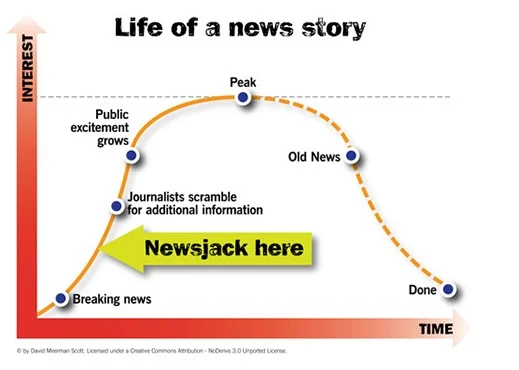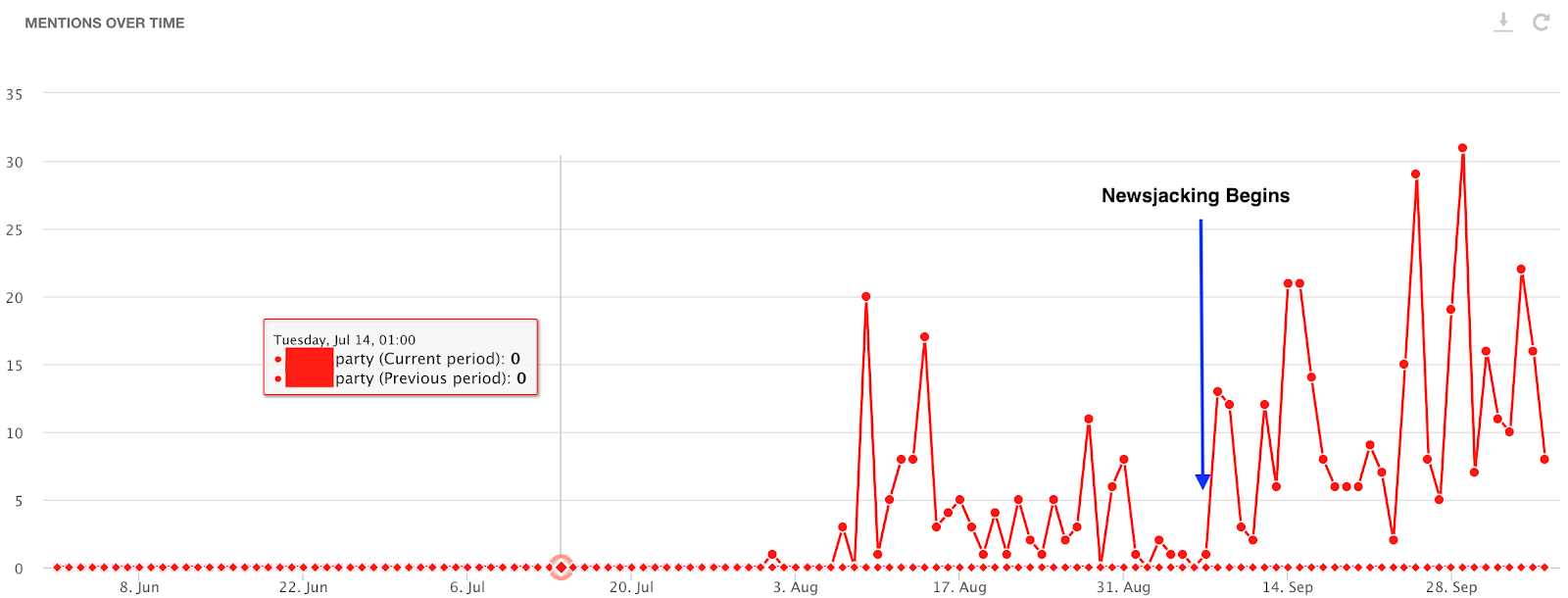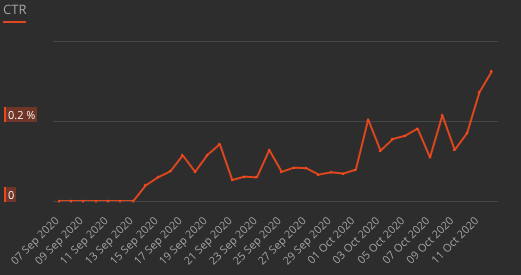2020 has been a year dominated by breaking news, and a world waiting with bated breath for the next news update. COVID-19, talk of a recession, elections, and conversations around data-privacy (Thanks Social Dilemma).
While brand safety has historically been a challenge to navigate around, this year, we decided to take on a different approach – facing the news head-on. Thus was born the Acquire News-jacking Initiative. Newsjacking is the process of piggybacking on trending news topics to get your brand noticed. Popularised by David Meerman Scott in his 2001 book Newsjacking, this technique has been adopted by brands around the world, with the most notable example being Oreo’s ‘Dunk in The Dark’ campaign.
As a promoter of ‘Data-Driven Marketing’, we’ve always believed that all advertisers should be able to reach their users in moments that matter, and decided to use programmatic to “follow the eyeballs.”
Aided by a real-time trend tracking dashboard, the ability of programmatic platforms to place ads against specific content, and some good ol’ kiwi ingenuity, the newsjacking initiative generated an average uplift in engagement of 32% across our first seven campaigns.
Here is how we harnessed lightning in a bottle.
How Newsjacking Works:
Conventionally, newsjacking has involved the use of social media or creative to build a campaign that leverages the virality of a trending news story. While this helps promote an advertiser’s brand, this is often dependent on the ability of an advertiser to rapidly churn out news-related content.
Newsjacking pioneer David Meerman Scott claims that a typical new story follows a lifecycle that looks like the image below (although alternative versions of the news lifecycle exist).

Regardless of the version of the news lifecycle used, the idea behind news-jacking is the same – watch for breaking news, capitalise on trending items, and reap the benefits of increasing traffic as virality of the news story grows.
How Acquire Used Newsjacking:
Acquire’s approach to newsjacking is less creative-focused, and more data-driven in that we use the power of programmatic to place campaign ads against trending news stories. While the creative often isn’t related to the news item, the ability to hyper-target audiences means that the product/service being advertised is highly relevant to the end user.
Step 1: Trend Tracking:
Acquire built a custom trend-tracking tool that monitored Google and Twitter to provide real-time updates on trending content across the internet (if you’re an Acquire client, you will now be able to access this on your portal).
This provided our buyers with a constant stream of trending topics in New Zealand, which was an indicator of where the ‘eyeballs’ were.
Step 2: Targeting
While the WATA survey helped categorise New Zealanders’ online media consumption as a whole, the variance in the target audience across each of the verticals Acquire advertises in meant that we needed to be agile in adapting to user behaviour.
As a general tactic, we used in-content ads across news websites to reach users while they skimmed through the body of the breaking news article. The trend-tracker was used to help choose which articles would receive the most interest. As all activity was overlaid with campaign-specific audiences, the relevance was achieved not by relating the creative to the trending story, but to the user. This also helped us ensure that we were minimising media spend wastage by not advertising to all users that these articles received.
In addition, we used high-impact banners when a significant story broke targeted to the homepages of NZ News websites to capture user attention. Combining this with the newer Social Extension formats meant that we were able to circumvent banner blindness around standard display ads.

All activity was overlaid with campaign-specific audiences to ensure that advertising continued to be hyper-targeted, and that we were minimising media spend wastage (by not advertising to all users on these articles).
Beyond display advertising, we sought to maximise our story-telling capabilities across content that users were highly engaged in. We delivered in-stream video ads across news content and YouTube videos across trending news stories, following these up with sequentially messaged shorter and longer form content to build a cohesive story as users browsed between news stories. With the evolving consumption of news, serving ads across trending news in YouTube allowed us to reach users whose primary source of news is ‘snackable video’ such as talk shows.
THE RESULTS:
Combined with pre-bid viewability overlays to ensure that our ads were seen, maintaining an average viewability of 85%+, we noticed significant increases in performance across the campaigns that used the newsjacking initiative.
A political party that we were advertising for in the New Zealand elections saw an increase in Social Media mentions when the newsjacking initiative began, with us targeting trending news about competing parties with conquest ads.

A domestic tourism campaign saw a steady increase in CTRs on their Display ads as we continued to optimise our display activity to deliver more across trending inventory.

Across 7+ campaigns that were part of the newsjacking experiment, we noticed an average uplift of 32% in engagement.
While our experiment was designed around vanity metrics such as CTRs and Completion Rates, as we continue to gather data and move towards true digital maturity, we believe that newsjacking will play an important role in delivering ROI by breaking through the advertising clutter to reach users in moments when they are truly engaged.
Talk to Acquire about newsjacking and how we can help enhance campaign performance.
